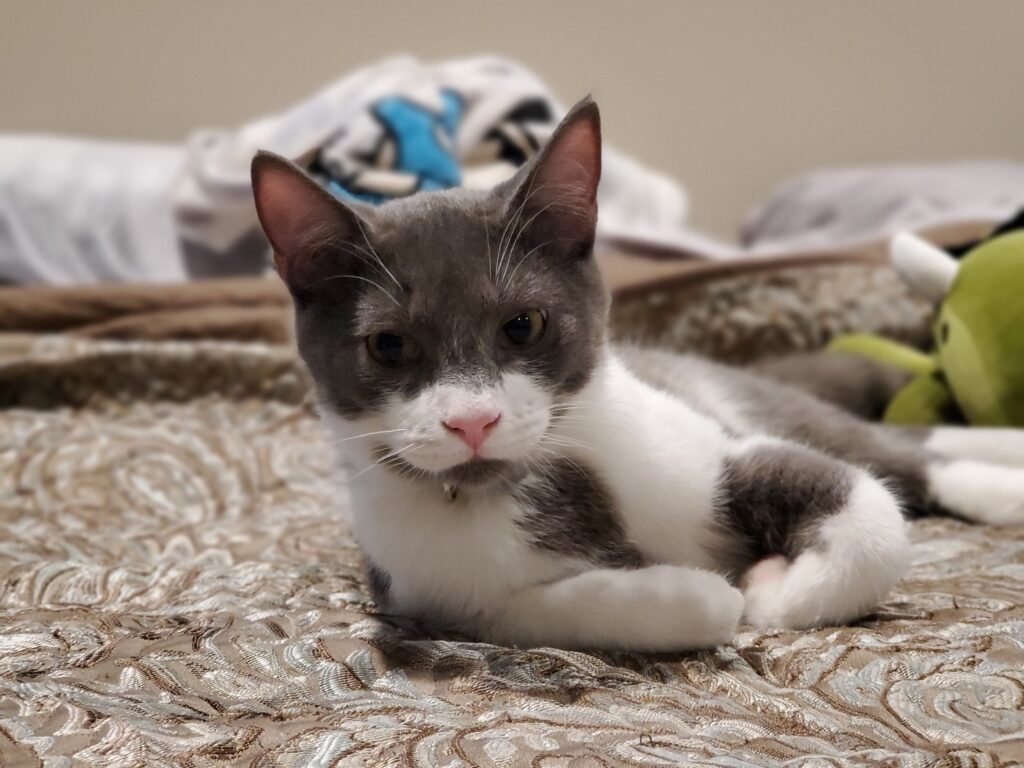You hear one cat let out a dramatic meow, followed by another responding from across the room. A full conversation seems to be happening, but is it? Do cats actually understand each other’s meows, or are they all just meowing into the void?
The answer is a little complicated. Cats do communicate with each other, but meowing is not their main language. In fact, most adult cats do not meow at each other very much at all. That kind of vocalization is usually reserved for humans, who apparently need everything explained to us out loud.
Still, when cats live together, they find ways to understand each other using a combination of vocal cues, body language, and scent. Let’s look at how cats communicate, what their meows mean, and whether they are ever actually “talking” to each other the way we think they are.
Meowing Is Mostly Meant for Humans
Kittens meow to their mothers when they are hungry or cold. It is how they get attention when they are too young to do much else. But as they grow, that meowing mostly stops when they interact with other cats.
Adult cats rarely meow at each other in the wild. Instead, they rely on body language, scent marking, ear position, tail posture, and facial expressions to communicate. Meowing, in contrast, seems to be something cats keep using for us.
We respond to their vocal cues. We feed them when they cry, pet them when they chirp, and panic when they wail at the door. Over time, cats learn that meowing is a great way to train their humans. So, while your cat might seem like they are having a full-blown conversation with their feline housemate, it is more likely they are just announcing themselves or making a quick point.
When Cats Do Meow at Each Other
That said, meows between cats can happen, especially in multi-cat households or among cats that are still figuring out their social dynamic.
Here are a few examples of when cats might meow at each other:
- Territory disputes
A loud meow can be a warning: “Back off, this is mine.” These meows are often longer, lower-pitched, and come with tense body language. - Play invitations
Younger or playful cats might let out a short chirp or high-pitched meow to invite a sibling to wrestle or chase. - Surprise or annoyance
A startled cat might meow if another one sneaks up on them or tries to steal their food. - Mating behavior
Unneutered or unspayed cats often use loud vocalizations to attract or communicate with potential mates.
These vocal exchanges are usually brief and situational. For more sustained communication, cats fall back on their tried-and-true method: silence and staring.
Body Language Is Their Real Native Language
If you want to understand what your cats are saying to each other, pay attention to what they do, not just what they say. Cats use an entire system of nonverbal communication that is much more reliable (and subtle) than meowing.
Some common signals include:
- Tail position: A tail held high is a sign of confidence and friendliness, while a low or puffed-up tail signals fear or aggression.
- Ear direction: Forward-facing ears mean curiosity or alertness. Flattened ears mean trouble is brewing.
- Slow blinking: This is basically the cat version of saying, “Hey, I like you.” It is a sign of trust.
- Body posture: A relaxed body signals safety and calm. A hunched back or arched posture usually means your cat is feeling defensive.
Cats spend more time reading each other’s body language than listening for vocal cues. In fact, when cats are constantly meowing at each other, it could be a sign that something is off with their relationship.

Meow-meow, meow meow meow meow meow. Meow, meow-meow meow meow, meow meow meow meow. Meow meow meow, meow meow meow-meow meow meow meow meow. Meow meow meow meow, meow meow meow meow-meow. #Meow #MeowMeowMeow #MeowMeow
Joey
Do Cats Understand Each Other’s Meows?
Sort of. Cats may recognize the tone or urgency of another cat’s meow, especially if they live together and have spent time developing a rhythm. Just like we get used to the sound of a baby crying or a dog barking in a certain way, cats can learn what different vocalizations mean from context.
But that does not mean they are having deep philosophical conversations.
Instead, meows between cats are more like one-word texts: brief, direct, and lacking nuance. Most of the understanding comes from body language, scent, and behavior patterns.
So, if it seems like your cats are “talking,” they are definitely communicating, but not necessarily in the way humans do.
How to Support Healthy Communication Between Cats
If you have multiple cats at home, keeping the peace depends on making sure they can express themselves safely and clearly.
Here’s how to help:
- Give them space: Make sure each cat has room to retreat, rest, and eat separately if needed.
- Use vertical territory: Cat trees, shelves, and window perches give them places to observe without competing for space.
- Keep routines predictable: Cats communicate best when their environment feels stable.
- Watch for tension: Hissing, chasing, or loud meowing may signal conflict. Don’t force them to share if they are not ready.
- Use scent sharing: Swapping blankets or beds helps them get used to each other’s scent, which is a key part of feline communication.
Final Thoughts: Cats Communicate, Just Not Like We Do
Cats understand each other more through body language and scent than through meowing. While some meows between cats do happen, they are often situational and not the primary way cats share information.
So if it sounds like your cats are having a late-night conversation in the hallway, they might be sending a message, but it is probably more of a quick statement than a full dialogue.
And if one of them suddenly sprints down the hall afterward, well, that was the reply.
Sources:
How Cats Communicate https://www.humanesociety.org/resources/how-cats-communicate
Understanding Cat Behavior https://vcahospitals.com/know-your-pet/cat-behavior-communication
Cat Vocalizations Explained https://www.petmd.com/cat/behavior/understanding-your-cats-meows
Feline Communication Methods https://www.icatcare.org/advice/cat-communication
Recent Posts
Your Cat Might Be a Furry Little Healer… or at Least a Fuzzy Alarm System If you’ve ever had your cat suddenly become extra clingy when you’re under the weather, you’re not alone. From...
Cats are experts at hiding things, socks under furniture, their disdain for your playlist, and, unfortunately, symptoms of illness. In the wild, showing weakness could make them a target, so even...


